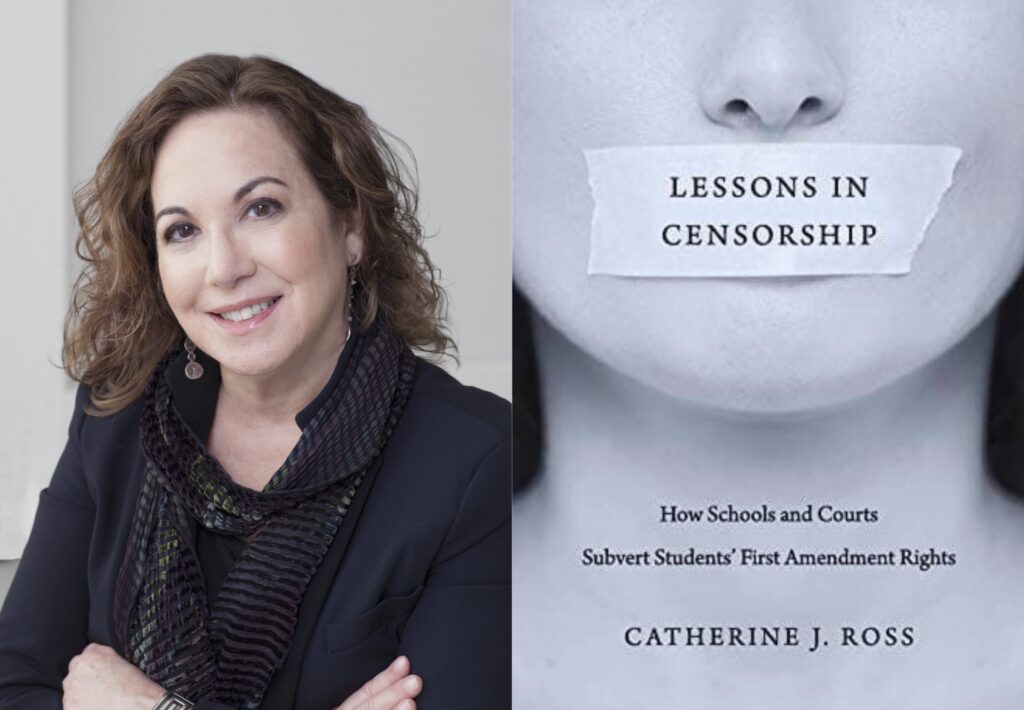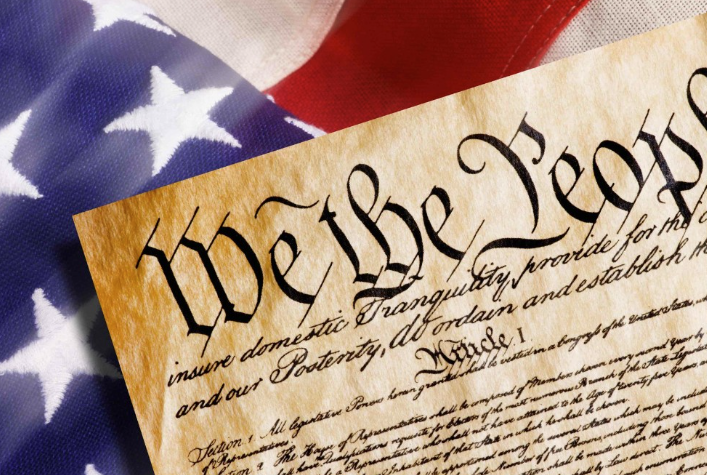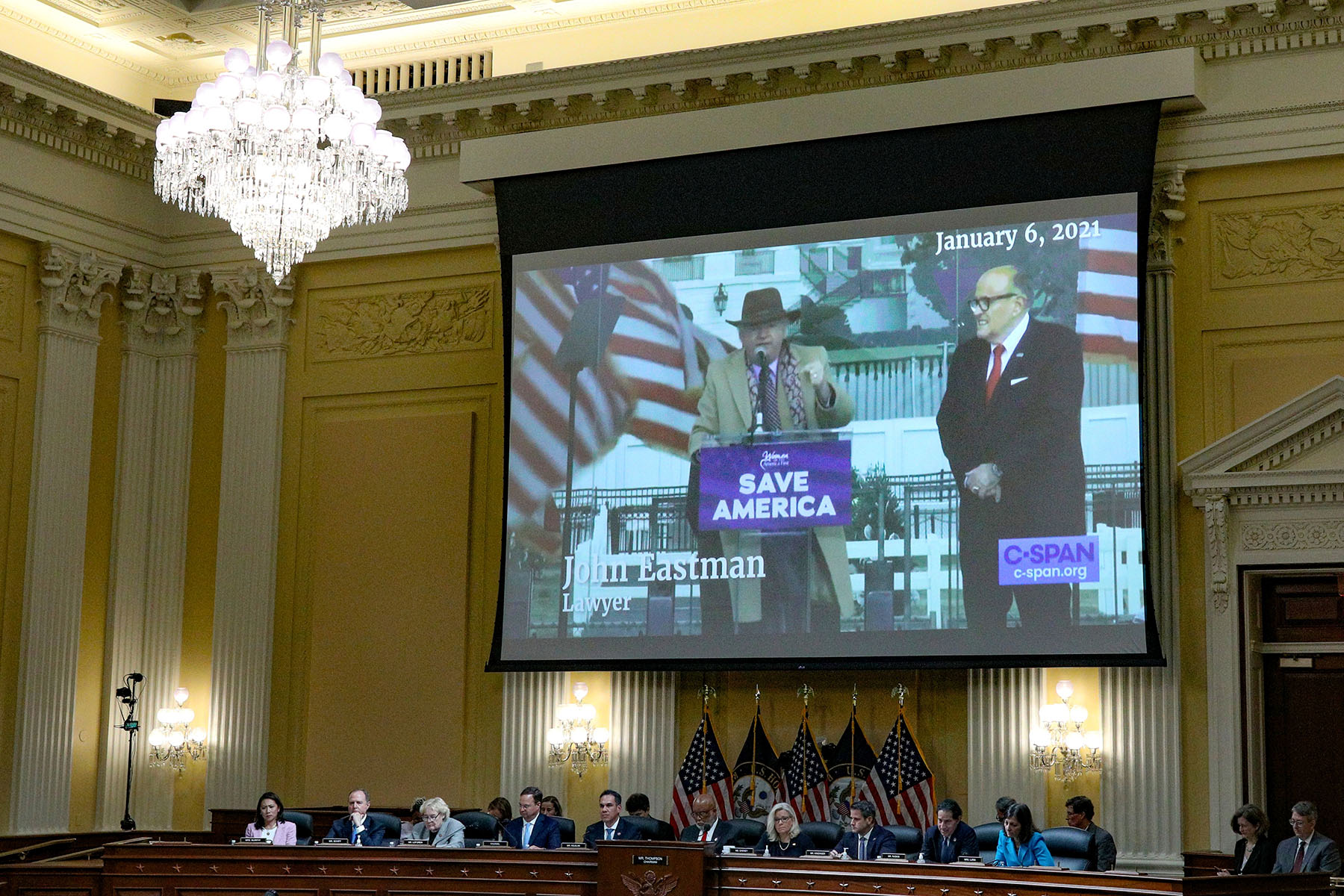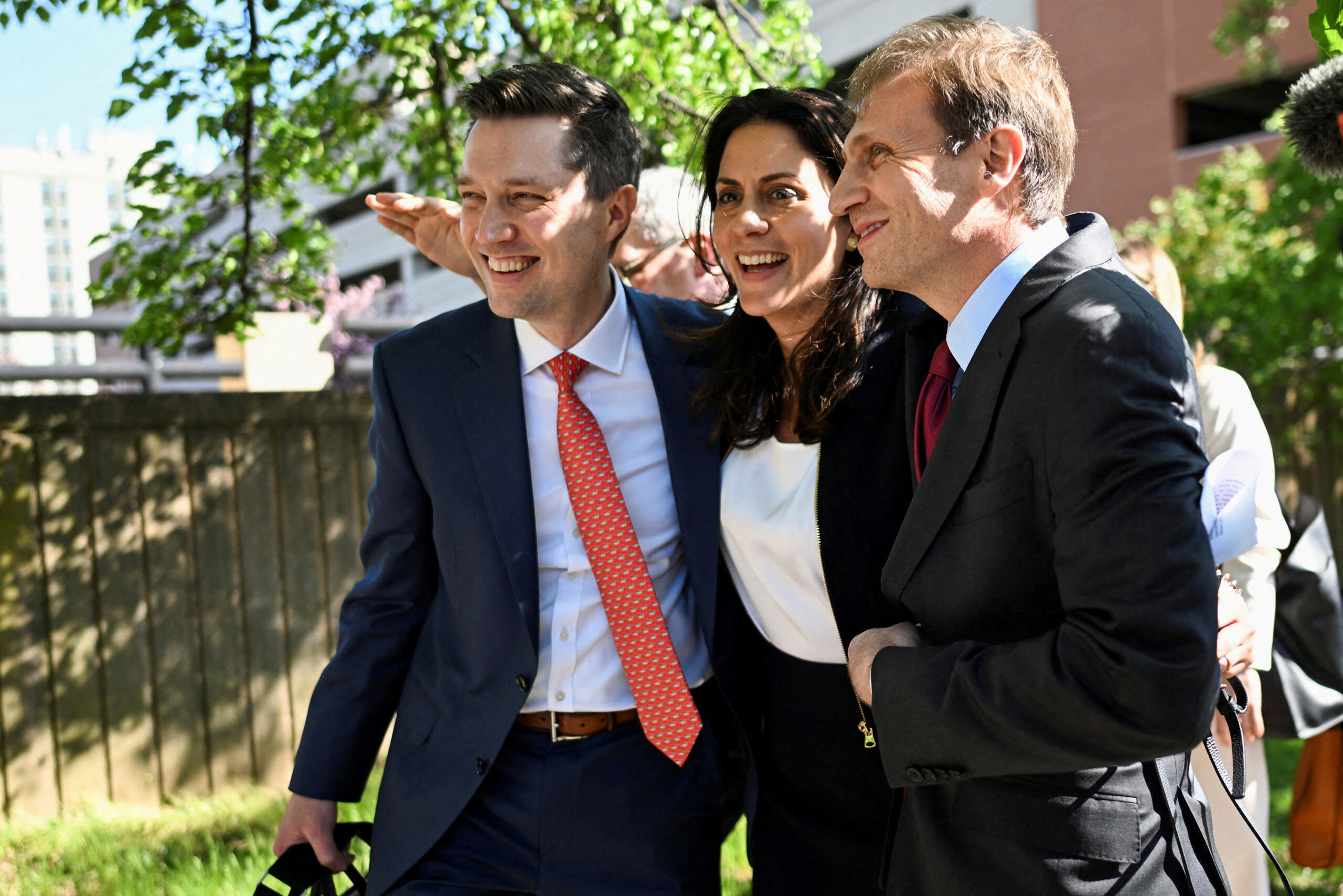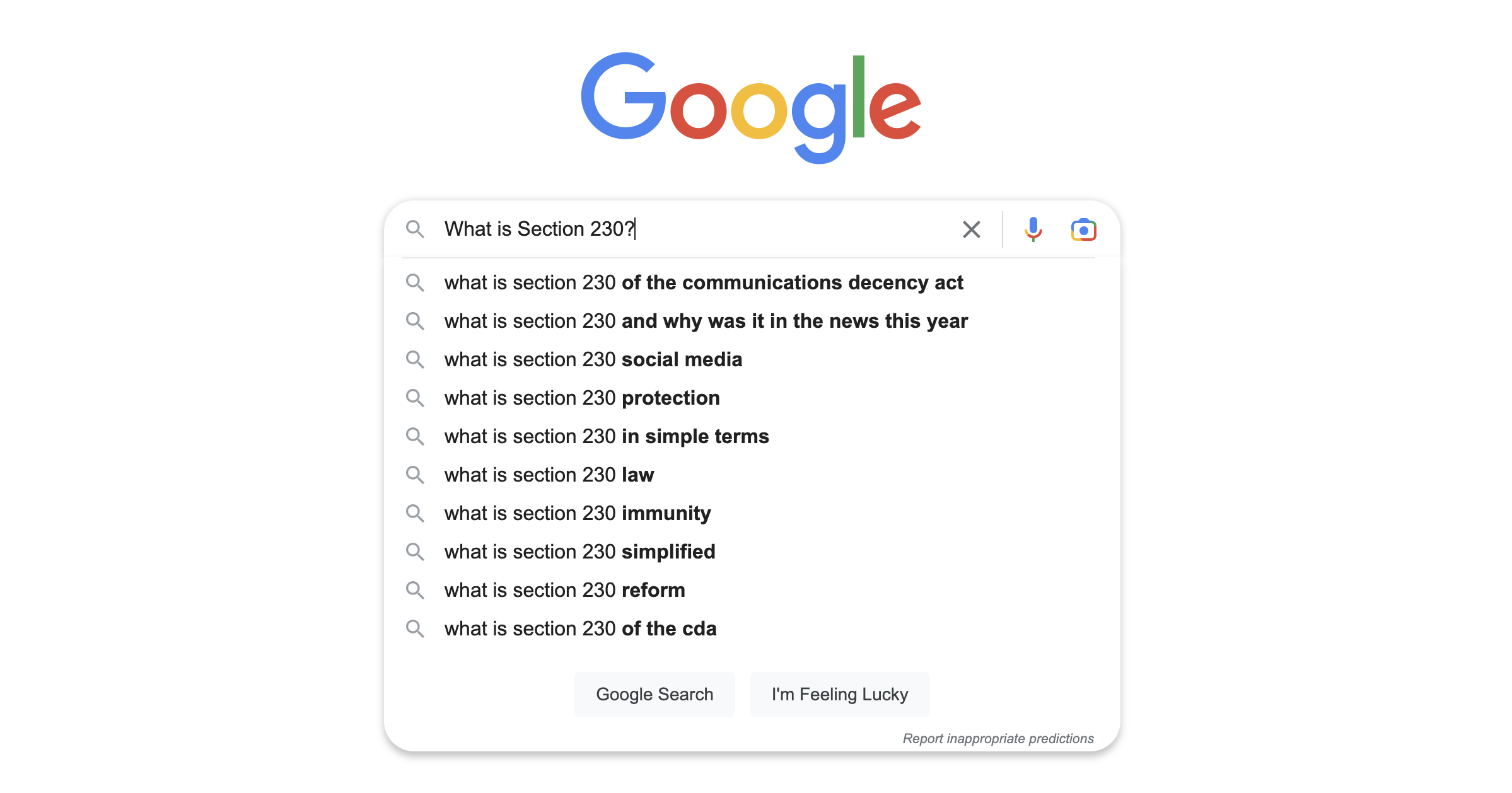Catherine J. Ross is Lyle T. Alverson Professor of Law at the George Washington University Law School. She is the author of Lessons in Censorship How Schools and Courts Subvert Students’ First Amendment Rights (Harvard University Press, 2015) which you can read an excerpt of here, and was the lead amicus in a brief in support of Brandi Levy, the subject of this essay. Her next book, A Right to Lie: Presidents, Other Liars, and the First Amendment (University of Pennsylvania Press) will be released on September 19, 2021 and is available for pre-order at Amazon, Barnes & Noble, etc.
A version of this article also appeared in the George Washington Law School Law Review’s On the Docket.
On June 23, 2021, the Supreme Court ruled 8-1 in Mahanoy Area School District v. B.L. that a Pennsylvania school district had violated a ninth grader’s speech rights when it disciplined her for off-campus, online expression. Headlines proclaimed a huge victory for student speakers—a cheerleader had the right to say “fuck,” the word the First Amendment famously protected on Cohen’s antiwar jacket. (1) Not so fast. It was a victory, but one riddled with fissures.
The initial reaction was understandable. B.L. (who has since graduated from high school and has been identified as Brandi Levy) was the first public school student speaker to prevail in the Supreme Court since the seminal 1969 ruling in Tinker v. Des Moines. (2) In Tinker, the Court acknowledged that educators needed more discretion to regulate student speech than the Speech Clause generally allows, but it rejected the idea that students “shed their constitutional rights to freedom of speech or expression at the schoolhouse gate.”(3) The Court held that schools could only regulate student speech if they reasonably anticipated that the speech would materially disrupt the school’s mission or infringe the rights of others.
Although subsequent rulings whittled away at Tinker’s holding by creating exceptions that established a taxonomy within student speech doctrine, Tinker still governs all student speech that does not fit an exception—the categorical exceptions are lewd speech, school-sponsored speech that appears to bear the school’s imprimatur, and non-political speech reasonably appearing to advocate the use of illegal substances. (4)
“Headlines proclaimed a huge victory for student speakers—a cheerleader had the right to say ‘fuck,’ the word the First Amendment famously protected on Cohen’s antiwar jacket. It was a victory, but one riddled with fissures.”
Mahanoy was the “first case” in which the Court considered “the constitutionality of a public school’s attempt to regulate true off-premises student speech.” (5) It raised the increasingly common question of whether public schools have any authority to regulate and punish what students say in their free time off-campus and, if so, how far that authority extends. While issues surrounding off-campus online speech have gained urgency in the social media age, the federal appellate courts that have reviewed challenges to school discipline for off-campus speech in recent years have been divided on whether schools may permissibly exercise authority over off-campus expression; and, if they may, whether school speech doctrine applies. (6) The Supreme Court received more than 20 amicus briefs supporting both sides in Mahanoy.
Justice Stephen Breyer’s opinion for the Court signed by all of the Justices (except for Clarence Thomas, who dissented) held that the school district had violated Levy’s speech rights by punishing her for off-campus expression. I believe the majority was correct, but that they failed to resolve any of the doctrinal issues the case presented such as how to distinguish between on-campus from off-campus speech and what standard would govern a school’s regulation of off-campus expression. Perhaps more importantly, the opinion did not give a yes or no answer to the question of whether schools might ever discipline off-campus speech without offending students’ First Amendment rights.
Since the Court found that the facts did not permit school intervention, one might argue that certiorari was improvidently granted. But the Justices did not take that route: they issued three opinions—Breyer’s for the Court, a concurrence by Justice Samuel Alito, and a dissent by Justice Thomas—totaling 39 pages and providing much fodder for analysis. Closer analysis reveals that Levy’s s victory just barely masks a series of warnings that student speech rights may not be as secure as the holding would suggest.
See also: Browse through our short video lessons on basic First Amendment principles.
I’ll start, however, with two pieces of good news for supporters of student speech rights before turning to the danger signals embedded in Breyer’s opinion.
First, Justice Breyer’s eloquent dicta—“America’s public schools are the nurseries of democracy”—reaffirmed the vision that had animated Tinker. In short, students have constitutional rights, which they retain in school, including the right to engage in unpopular or controversial speech. (7) Similarly, in Lessons in Censorship: How Schools and Courts Subvert Students’ First Amendment Rights (Harvard University Press, 2015) I argued—building in part on Justice Breyer’s own vision Active Liberty: Interpreting Our Democratic Constitution (Random House, 2005)—that schools best promote robust democracy through an approach I called “living liberty.” Under this vision, schools model liberty by respecting students’ constitutional rights, while students learn how to exercise rights under respectful adult guidance.
Second, public school students dodged the immediate threat that school officials could discipline them for what they say 24/7. Many observers, including me, had feared that the Court agreed to review Mahanoy with an eye toward granting school officials authority over student expression well beyond the school’s boundaries, days, and hours. That did not happen, largely because the facts (described below) failed to support an extension of the school’s disciplinary powers. Further, the case did not implicate social problems that might be wrapped up with off-campus expression and conduct. All of the briefs submitted to the Court agreed that certain off-campus behavior implicating starker social interests such as severe bullying or threats “may call for school regulation.” (8)
The facts in Mahanoy were undisputed. In May 2017, 14-year-old Brandi Levy–a junior varsity cheerleader finishing ninth grade – learned that she had not been chosen to move up to the varsity cheerleading squad, and would remain on the junior varsity team. Facing final exams, and having also failed to make a softball team, Levy was “frustrated” and, as Justice Breyer wryly put it, “did not accept the coach’s decision with good grace.” (9)

Brandi Levy, a former cheerleader at Mahanoy Area High School in Mahanoy City, Pennsylvania and a key figure in a major U.S. case about free speech, poses in an undated photograph provided by the American Civil Liberties Union. Danna Singer/Handout via REUTERS
While at a convenience store on a Saturday, Levy and a friend used her personal smartphone to post on Snapchat, a social media site that allows users to share materials that disappear after 24 hours. The post at issue included a photo of the two girls with middle fingers raised captioned: “Fuck school fuck softball fuck cheer fuck everything.” (10) That post, which only about 250 of Levy’s “friends” on the site could access, automatically disappeared a day after she shared it.
Before the post vanished, a cheerleader from Levy’s high school captured the image on her cellphone and shared it with others, including other squad members, and her mother, who was one of the team’s coaches. Several cheerleaders were “visibly upset.” The coaches and the principal took the post as criticism—a common though unconstitutional ground for punishing student speech. They concluded the text violated team and school rules banning profanity. Rejecting Levys proffered apology, the school suspended her from the junior varsity team for the next academic year. Her parents sued, alleging violation of her First Amendment rights.
The District Court issued a series of rulings in Levy’s favor, including a temporary restraining order and a preliminary injunction ordering the school to reinstate Brandi to the team. It then granted summary judgment to Levy, on the ground that her Snapchat had not caused substantial disruption at school, thus rendering the punishment a violation of her First Amendment right under Tinker. That holding was critical: it meant that the school could not have punished Levy’s expression even if it had occurred on campus.
On appeal, the Third Circuit panel upheld the district court ruling, but on different grounds. The Third Circuit, which had long been the appellate court most protective of student speech from off-campus, held that off-campus expression like Levy’s post was immune from the special rules governing student speech. (11) The school could not punish it. Tinker’s standard, the panel held, did not apply to pure speech “that is outside school-owned, -operated, or –supervised channels and that is not reasonably interpreted as bearing the school’s imprimatur.” (12) A concurring judge joined in the result, but on different reasoning. He agreed with the district court that Levy’s speech was “not substantially disruptive.” (13)
A nearly unanimous Supreme Court affirmed the ruling for Levy, but expressly repudiated the Third Circuit panel’s reasoning. Instead, it agreed with the panel’s concurring judge and the district court that Levy’s off-campus speech did not come close to satisfying Tinker’s material disruption standard.

Mary Beth Tinker holding her original detention slip after she wore a black armband to school to protest the Vietnam War (with a replica on her left arm) during a speech at Textor Hall, Ithaca College, 19 September 2017.
“Even where parents view their children’s words as unacceptable, parents rightly view the power to discipline and choosing the level of appropriate discipline as a prerogative belonging to them, not to the state.”
However, Justice Breyer’s opinion did not address the question raised in the cert petition: if schools may regulate off-campus speech, what legal standard applies? It also failed to define “off-campus” expression, a distinction that may no longer rest purely on the speaker’s location in the age of online communications.
The Supreme Court had skirted the issues surrounding off-campus speech when it considered Morse v. Frederick in 2007. (14) In that case, high school student Joseph Frederick displayed a large banner proclaiming “BONG HiTS 4 JESUS” across the street from his school during the school day while he and other students, under faculty supervision, watched the Olympic Torch Relay pass by. The Court rebuffed Frederick’s argument that his speech took place outside of school, and instead treated the gathering as the equivalent of an official class trip. That classification allowed the Court to avoid defining the line separating on-campus from off-campus speech. Chief Justice John Roberts, writing for the plurality, acknowledged the failure to draw a clear line between on- and off-campus speech. “There is,” he wrote, “some uncertainty at the outer boundaries as to when courts should apply school speech precedents, but not on these facts.” (15)
If Frederick’s banner appeared to fall at the outer edges of in-school speech, Levy’s Snapchat clearly constituted off-campus expression, as every judge who heard the case agreed. The ease with which all parties agreed that Levy’s Snapchat met any definition of off-campus speech allowed Justice Breyer to decline to define the term. Breyer listed some factors that indicated Levy’s speech took place off-campus—the timing, the location, the use of a personal phone to reach a private group, and the fact that she did not “target” or identify the school or individuals. He also catalogued potential exceptions to the Third Circuit’s broad framing of off-campus speech including: travel to and from school, speech on school-owned equipment or sites, and during remote learning, all of which Levy and supporting amici conceded, and contemplated that additional exceptions might be warranted depending on the student’s age, the activity—such as extracurricular endeavors, and even “the impact on the school itself,” a highly malleable concept. (16)
The majority’s bottom line hardly elucidated matters: “we do not now set forth a broad, highly general First Amendment rule stating just what counts as ‘off campus’ speech and whether or how ordinary First Amendment standards must give way off campus to a school’s special need.” (17)
However broadly or narrowly off-campus speech is ultimately defined, eight Justices expressly opened the door for schools to regulate and punish off-campus student expression under the right—and as yet undefined—circumstances: “We do not believe the special characteristics that give schools additional license to regulate student speech always disappear when a school regulates speech that takes place off campus.” (18)
See also: Book Excerpt of Catherine J. Ross’ Book Lessons in Censorship
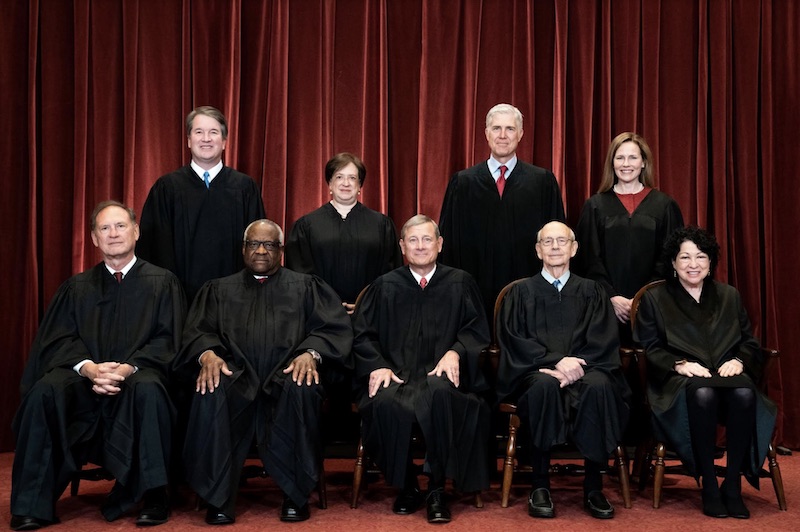
Top row: Associate Justice Brett Kavanaugh, Associate Justice Elena Kagan, Associate Justice Neil Gorsuch, and Associate Justice Amy Coney Barrett. Bottom row: Associate Justice Samuel Alito, Associate Justice Clarence Thomas, Chief Justice John Roberts, Associate Justice Stephen Breyer and Associate Justice Sonia Sotomayor pose for a group photo at the Supreme Court in Washington, U.S., April 23, 2021. Erin Schaff/Pool via REUTERS
The Court similarly limited its advice in anticipation of future lower court decisions that might permit schools to discipline off-campus speech. It said, “little more than this:” when it comes to off-campus speech “the leeway the First Amendment grants to schools in light of their special characteristics is diminished.”(19) What is a school principal to make of that?
The Supreme Court’s failure to define off-campus speech and to provide guidance to school administrators and lower courts about whether, when, and on what grounds schools may regulate and punish students for what they say on their own time from their own equipment, is likely to lead to much additional litigation—and to even more incidents in which schools punish off-campus expression that never reach a court. The ACLU, which so ably represented Levy, and similar public interest groups can expect to send a lot of lawyers’ letters to school districts and localities as the latter test exactly how wide a door Mahanoy opened.
The lack of practical guidance in Mahanoy should not come as a surprise. Concurring in Morse v. Frederick, Justice Breyer had urged the Court to rule in favor of the principal who censored the BONG HiTS 4 JESUS banner on the ground of qualified immunity: that is, a defense based on the claim that a public employee can not be held accountable for violating someone’s constitutional rights if the law was not sufficiently clear when she acted. In Morse, Breyer cautioned that the “Court need not and should not decide this difficult First Amendment issue on the merits.” (20) Addressing concerns about abandoning the Supreme Court’s guidance function, Breyer doubted that the Court had offered “practically valuable guidance” in the case or that it could easily do so, because “school officials need a degree of Flexible authority.” (21)
Although qualified immunity was not at issue in Mahanoy, Breyer’s opinion for the Court largely avoided reaching the merits of “difficult First Amendment” questions about the limits of school authority. The Court’s reluctance to craft any parameters leaves school officials named as defendants in future lawsuits in an excellent position to claim qualified immunity.
The lack of guidance, much less clarity, in Mahanoy will likely lead to the result Breyer feared would arise from the court’s generalities in Morse: “further disputes among teachers and students” that will likely “make their way from the schoolhouse to the courthouse.” Under Mahanoy those disputes will have an extra step: they will make their way from the student’s home to the courthouse and through the schoolhouse. (22)
“However broadly or narrowly off-campus speech is ultimately defined, eight Justices expressly opened the door for schools to regulate and punish off-campus student expression under the right—and as yet undefined—circumstances.”
Intrusion into the student’s home or the local convenience store – normally the province of parental supervision – brings me to a final set of constitutional issues Justice Alito addressed in-depth in his Mahanoy concurrence: the clash between school officials’ assertion of authority over off-campus speech and the constitutional right of parents to raise and control their children. (23) All three of the opinions in Mahanoy considered whether schools have in loco parentis authority over students, and, if they do, whether that authority is implied by the child’s attendance at school or whether that authority must be expressly given.(24)
I note that I was the lead amicus in a brief filed on behalf of Levy that addressed the allocation of authority between parents and school authorities, and that raised many of the issues addressed in Justice Alito’s concurrence.(25) The right of parents to raise their children is the oldest fundamental liberty interest our courts recognize. Outside of school, parents make and enforce the rules so long as neither parent nor child violates the law. Parents may disagree about what language or conduct is acceptable and may encourage speech that schools would abhor. Even where parents view their children’s words as unacceptable, parents rightly view the power to discipline and choosing the level of appropriate discipline as a prerogative belonging to them, not to the state.
While each of the three opinions acknowledged some division of authority between schools and parents over what children may say outside of school, the justices left the precise boundaries unclear. Mahanoy requires careful reading. So far, it appears to offer many more questions than answers. I plan to address many of those questions in a future law review article.
Citations
1–E.g., Adam Liptak, “Justices Rein In Schools’ Power to Limit Speech, 8-1 Ruling for Student,” N. Y. Times, June 24, 2021 A1; The title of this article was changed from an earlier online edition. “Supreme Court Finds for Cheerleader Punished for Vulgar Snapchat Message,” https://www.nytimes.com/2021/06/23/us/supreme-court-free-speech-cheerleader.html; Cohen v. California, 403 U.S. 15 (1971).
2–Tinker v. Des Moines Indep. Cmty. Sch. Dist., 393 U.S. 503 (1969).
3–Tinker, 393 U.S. 503 (1969).
4–Bethel Sch. Dist. No. 403 v. Fraser, 478 U.S. 675 (1986); Hazelwood Sch. Dist. v. Kuhlmeier, 484 U.S. 260 (1988); Morse v. Frederick, 551 U.S. 393 (2007). The taxonomy and the meaning of each test is discussed in Catherine J. Ross, Lessons in Censorship: How Schools and Courts Subvert Students’ First Amendment Rights (2015).
5–Mahanoy Area Sch. Dist. v. B.L., No. 20-255, slip op. (Alito, J., concurring). at 1 (June 23, 2021).
6–Cases are discussed in Ross, supra note 3, at 224-225; see also Bell v. Itawamba Cty. Sch. Bd., 799 F.3d 379 (5th Cir. 2015) (en banc) (holding Tinker applies to a rap recording made off campus that purportedly intimidated two high school coaches), cert. denied, 577 U.S. 118 (2016).
7– Mahanoy, slip op. at 7. An earlier court had expressed this vision even more starkly in West Virginia State Bd. Of Educ. v. Barnette, 319 U.S. 624 (1943) (constitutional rights are nowhere more important than in our public schools).
8–Mahanoy, slip op. (Breyer, J.) at 5-6.
9–Id. at 2.
10– Id.
11– See J.S. v. Blue Mountain Sch Dist., 650 F.3d 915 (3d Cir. 2011) (en banc); Layshock v. Hermitage Sch. Dist. 650 F.3d 205 (3d Cir. 2011) (en banc).
12–B.L. v. Mahanoy Area Sch. Dist., 934 F.3d 170, 189 (3d Cir. 2020).
13–Mahanoy 934 F.3d at 194-95 (Ambro, J., concurring).
14–Morse v. Frederick, 551 U.S. 393 (2007).
15– Id. at 399 (citation omitted).
16–Mahanoy, slip op. (Breyer, J.) at 6.
17– Id.
18– Id. at 5.
19– Id. at 8.
20–Morse v. Frederick, 551 U.S. 393, 425 (2007) (Breyer, J., concurring).
21–Id. at 428.
22–Id. at 428.
23–Mahanoy, slip op. (Alito, J., concurring) at 5-7. Alito introduced these issues in his Morse concurrence. Morse, 551 U.S. at 424 (Alito, J., concurring).
24–E.g., Mahanoy, slip op.(Breyer J.) at 7, 10; Mahanoy, slip op. (Alito, J., concurring) at 5-8 (parents implicitly relinquish “the measure of authority that the schools must be able to exercise” to accomplish their “educational mission”); Mahanoy, slip op. (Thomas, J., dissenting) at 1-4 (schools have historically had wide-ranging in loco parentis authority, including off campus).
25–Brief of Law and Education Professors as Amici Curiae Supporting Respondents, Mahanoy Area Sch. Dist. v. B.L., No. 20-255 (June 23, 2021), 2021 WL 1255360. Joining the brief were Barbara Bennett Woodhouse, Sigal Ben-Porath, Martin Guggenheim, David L. Hudson, Jr., Meira Levinson and Catherine Smith. We were superbly represented in filing of the amicus brief by Elisabeth Theodore and her excellent team at Arnold & Porter Kaye Scholer, LLP.
